This article was medically reviewed by Ronn Callada, RN, MS. Ronn Callada, ANP, RN is a Nurse Practitioner at the Memorial Sloan Kettering Cancer Center in New York. Ronn is also part of the adjunct faculty at New York University in nursing. He received his MS in Nursing from Stony Brook University School of Nursing in 2013.
There are 10 references cited in this article, which can be found at the bottom of the page.
wikiHow marks an article as reader-approved once it receives enough positive feedback. In this case, 100% of readers who voted found the article helpful, earning it our reader-approved status.
This article has been viewed 236,373 times.
Tuberculosis (TB) is a very contagious bacterial infection caused by Mycobacterium tuberculosis. It usually affects the lungs but can affect any part of the body.[1] A person should get tested for TB if they have been around an infected person or suspects that they may have been exposed to the infection. The Mantoux tuberculin skin test, also known as the PPD test, is a screening tool to test a patient’s exposure to tuberculosis.[2] This test only reflects whether the patient has been infected with TB bacteria, and cannot distinguish whether they have latent TB infection or TB disease.[3] It is important to have a trained healthcare provider carefully and properly administer the test for the best chance of an accurate reading.
Steps
Understanding TB
-
1Know how TB spreads. The tuberculosis bacteria are airborne, meaning they are put into the air when a person with TB disease in their lungs or throat coughs, sneezes, speaks, or sings.[4] If a person breathes in the bacteria, they can become infected.
- A person cannot get TB from touching people, shaking hands, or touching bed linens or toilet seats.
- A person cannot get TB by sharing food or drink, sharing toothbrushes, or kissing. (However, they can become infected with other communicable diseases by doing these things.)
-
2Compare latent TB infection and TB disease. It is possible to be infected with TB bacteria and not get sick. The TB skin test cannot tell the difference between latent TB infection or TB disease.[5] [6]
- If the person has latent TB infection, they are infected with the TB bacteria, but their body is able to fight it off. They will not experience any symptoms and will not feel sick. They also will not be infectious and cannot spread TB to others. A skin test will indicate TB infection.
- However, if the patient’s body stops being able to fight off the bacteria, they can become ill with TB disease. They may become ill shortly after being infected, or they might feel fine for years until their immune system is weakened by something else.
- TB disease occurs when a patient’s body cannot keep the TB bacteria from multiplying. They will feel sick and experience symptoms. People with TB disease are infectious and can spread the bacteria to others. A skin test will indicate TB infection.
Advertisement -
3Recognize the symptoms of TB disease. To determine whether a patient has been exposed to the TB bacteria, you should know how to recognize the symptoms of TB disease.[7] These include:
- A bad cough lasting 3 weeks or longer
- Chest pain
- Coughing up blood or bloody sputum (mucus)
- Fatigue or weakness
- Weight loss
- Loss of appetite
- Chills or fever
- Night sweats
Preparing for the Test
-
1Gather your supplies. Before administering the test, gather all of the necessary supplies, including:[8]
- A vial of tuberculin (tuberculin should always be stored in a refrigerator)
- Latex gloves
- Small disposable tuberculin syringe, 1.2 cc or smaller, with a needle 25 g or smaller
- Alcohol swab
- Cotton ball
- Ruler with millimeter measurements
- Sharps disposable container
- Patient’s paperwork
-
2Check the tuberculin’s expiration, date of opening, and whether it’s single or multidose. Before attempting to administer the tuberculin, verify that it’s safe and appropriate to use.[9]
- The expiration date should be printed on the label. It will indicate when an unopened vial should no longer be used. If the expiration date has passed, don’t use the vial.
- Check the date the vial was opened. The label should also specify a beyond-use date indicating how long after its initial opening a vial can still be used. If the beyond-use date has passed, don’t use the vial. Your local health department will be able to let you know the exact number of days after a multidose vial is opened before you must discard it.
- The manufacturer’s guidelines should state whether the vial is single or multidose. A multidose vial includes a preservative that allows you to administer it to more than one patient.
-
3Make sure you have a good area for administering the test. You will need a firm surface for the patient to rest their arm on. The area should also be well-lit and clean.[10]
-
4Wash your hands. Wash with warm water and soap, scrubbing liberally for 20 seconds.[11]
- Rinse your hands with a paper towel and put on a pair of latex gloves.
Administering the Test
-
1Educate the patient. Explain what the skin test does, how long it will take, and what each step of the procedure will be like. After you have explained the procedure, ask whether the patient has any questions for you.[12]
- Tell the patient that you will be injecting a very small amount of fluid into their arm. If infection is present, the injection site will show a reaction, such as swelling or a raised, hard area.[13]
- Explain that the patient must return to your office after 48-72 hours to have the test site examined.
- If the patient cannot return after 48-72 hours, do not administer the test. Make another appointment.
-
2Choose the injection site. The left arm is the standard choice, though the right arm is acceptable if you can’t use the left.[14]
- Be sure the patient’s arm is on a firm, well-lit surface.
- Slightly flex the arm at the elbow and position the hand palm side up.
- Look for a place below the elbow clear of elements that could interfere with the test reading, like hair, scars, veins, or tattoos.
-
3Wipe the top of the tuberculin vial with an alcohol swab. Be sure to wipe vigorously.
- Allow the alcohol to dry.
-
4Fasten the needle to the syringe and draw the tuberculin solution. To fasten the needle to the syringe, twist the cap into the tip of the syringe.
- Place the vial on a flat surface, then insert the needle into the stopper.
- Draw the solution. Pull back on the plunger and draw out slightly more than one-tenth (0.1) of a milliliter of solution.
- Remove the needle from the vial. Make sure there are no bubbles in the syringe. If there are bubbles, expel the bubbles by slightly pushing the plunger up while pointing the needle of the syringe towards the ceiling.
-
5Prepare the injection site. Clean the injection site with an alcohol swab. Circle the alcohol swab outward from the center of the site.[15]
- Allow to dry.
- Stretch the skin at the injection site taut between your thumb and forefinger. Hold the syringe flange parallel to the forearm with the needle bevel facing upwards. Still holding the skin taut, insert the needle slowly into the injection site at a 5-15 degree angle.
-
6Inject the tuberculin solution. After inserting the needle, advance it approximately 3 millimeters. The needle tip should be intra dermal (below the epidermis but in the dermis).
- Let the skin go and hold the syringe steady. Depress the plunger to inject the solution intradermally, just below the superficial layer of skin.
- A tense, pale raised area about 6-10 millimeters will immediately appear over the needle bevel.
-
7Remove the needle. Be careful to remove without pressing or massaging the patient’s arm.[16]
- Do not recap the needle; you’ll risk sticking yourself.
- Discard the needle immediately in a sharps container.
- If a drop of blood appears on the patient’s arm, blot it lightly with a cotton ball or gauze pad. Don’t cover the site with a bandage because it could interfere with the test.[17]
- Return the tuberculin solution to the refrigerator or a cooling container.[18]
-
8Check for proper administration. Measure the raised skin at the injection site; it should be at least 6 millimeters in diameter.[19]
- If the raised area is smaller than 6 millimeters, it indicates that either the needle was inserted too deeply or the dose was inadequate. You should repeat the test.
- You may also need to repeat the test if the patient doesn’t return 48-72 hours after the injection to complete the test.[20]
- If you need to repeat the test, choose another site at least 2 inches (5.1 cm) away from the original site.[21]
-
9Instruct the patient in what to do next. Instruct the patient to have the test read 48-72 hours later.
- Verify the appointment for the test reading.
- The test must be read by a trained healthcare provider. The patient cannot read the test on their own.
-
10Tell the patient what to expect. The patient can anticipate symptoms including itching, swelling, or irritation at the site that should go away within a week.[22] Remind the patient to come back if a more severe reaction occurs.
- Instruct the patient to avoid scratching the site, covering it with a bandage, or applying any itching creams.
- Instruct the person to also avoid scrubbing the area, though showering is okay.
References
- ↑ http://www.cdc.gov/tb/
- ↑ http://www.cdc.gov/tb/topic/testing/default.htm
- ↑ http://www.cdc.gov/tb/topic/testing/default.htm
- ↑ http://www.cdc.gov/tb/topic/basics/default.htm
- ↑ http://www.cdc.gov/tb/topic/basics/default.htm
- ↑ https://www.cdc.gov/tb/topic/basics/tbinfectiondisease.htm
- ↑ http://www.cdc.gov/tb/topic/basics/default.htm
- ↑ https://www.cdc.gov/tb/education/mantoux/pdf/mantoux.pdf
- ↑ http://www.cdc.gov/injectionsafety/providers/provider_faqs_multivials.html
- ↑ https://www.cdc.gov/tb/education/mantoux/pdf/mantoux.pdf
- ↑ http://www.cdc.gov/handhygiene/
- ↑ https://www.cdc.gov/tb/education/mantoux/pdf/mantoux.pdf
- ↑ http://www.cdc.gov/tb/topic/testing/default.htm
- ↑ https://www.cdc.gov/tb/education/mantoux/pdf/mantoux.pdf
- ↑ https://www.cdc.gov/tb/education/mantoux/pdf/mantoux.pdf
- ↑ www.nyc.gov/html/doh/.../pdf/tb/tb-hcp-tst-guide.pdf
- ↑ https://www.cdc.gov/tb/education/mantoux/pdf/mantoux.pdf
- ↑ https://www.cdc.gov/tb/education/mantoux/pdf/mantoux.pdf
- ↑ https://www.cdc.gov/tb/education/mantoux/pdf/mantoux.pdf
- ↑ http://www.cdc.gov/tb/publications/factsheets/testing/skintesting.htm
- ↑ https://www.cdc.gov/tb/education/mantoux/pdf/mantoux.pdf
- ↑ https://www.cdc.gov/tb/education/mantoux/pdf/mantoux.pdf
- ↑ https://www.cteonline.org/curriculum/lessonplan/intradermal.../ozW0Ya
About This Article
To properly place a TB skin test, start by drawing the tuberculin into a syringe. Next, insert the needle intradermally, and depress the plunger. Then, check that the raised skin of the injection site is at least 6mm in diameter, and if not, repeat the test at least 2 inches from the original site. Finally, instruct the patient to return 48-72 hours later to have the test checked. For more tips from our Medical co-author, like how to follow health and safety precautions during the test, read on!

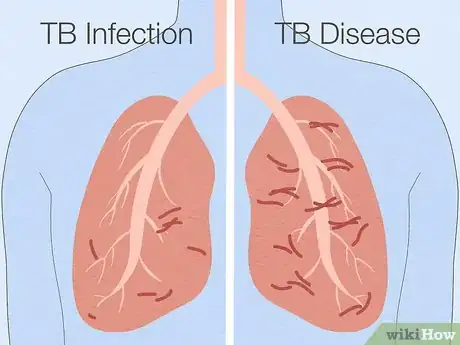
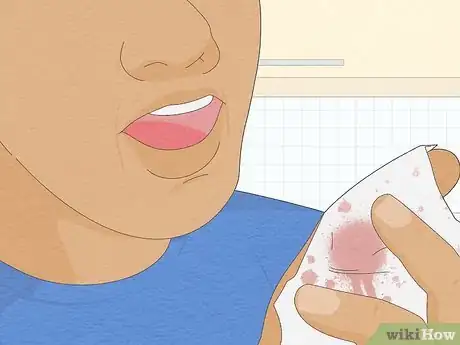
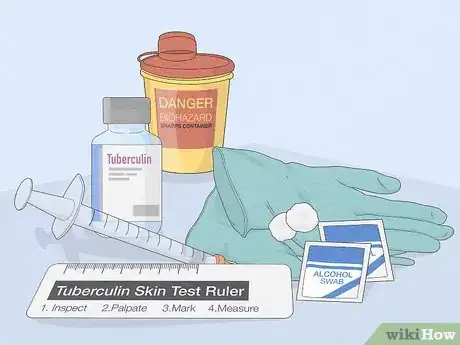
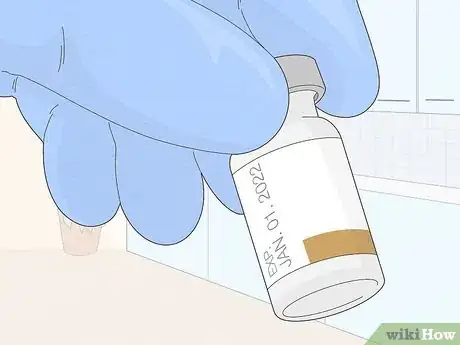




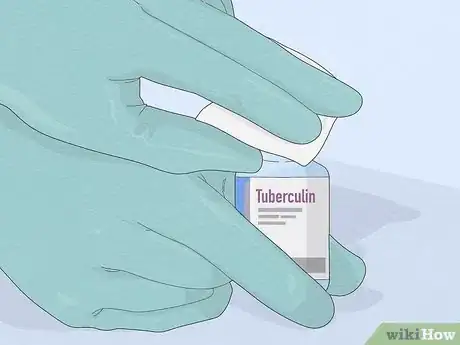

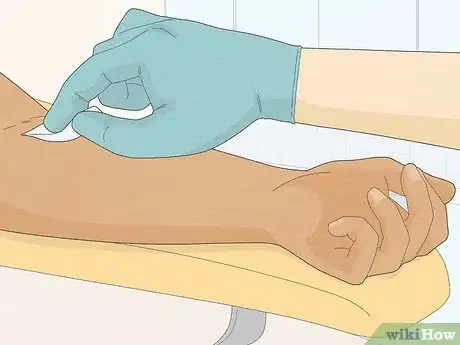




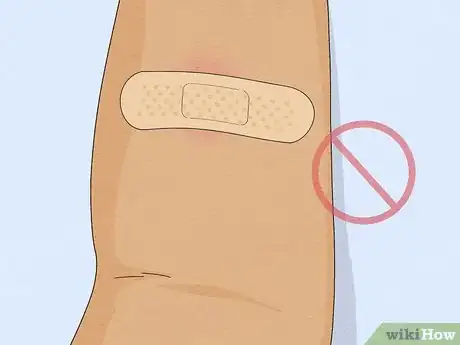

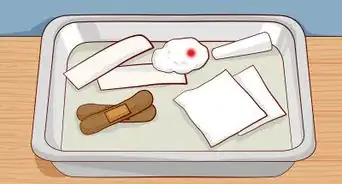



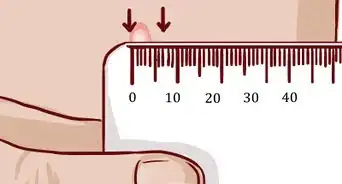


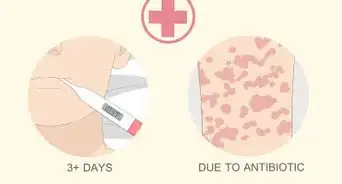





















































Medical Disclaimer
The content of this article is not intended to be a substitute for professional medical advice, examination, diagnosis, or treatment. You should always contact your doctor or other qualified healthcare professional before starting, changing, or stopping any kind of health treatment.
Read More...